-
STOP THE SINKING OF BULACANWe sign this petition because this is not politics — this is survival. Because development should not drown entire provinces. Because our children deserve dry homes, clean water, and a future. Before more towns disappear under water — act now.434 of 500 SignaturesCreated by Bulacan Coastal Watch

-
The Sierra Madre Covenant: It is NOW Our TurnThe Call for Protection The tragedies in our archipelagic neighbors serve as a dire warning we can no longer ignore. Cebu has shown us the unprecedented tragedy of uncontrolled floods, resulting in widespread loss of lives and properties. This reality could soon become our own. We in Luzon have been constantly shielded by the Sierra Madre Mountain Range—a natural fortress that has served as our primary defense against typhoons and the cascading effects of climate change. But this protection has come at a cost. The shield is weakening. Just as we were protected by Her, now it is our urgent turn to protect the Sierra Madre Mountain Range.209 of 300 SignaturesCreated by Protect Sierra Madre Movement
-
For the Future of Bais City, Manjuyod, and Tañon Strait — Support the Filing of a Writ of KalikasanFor generations, the rivers and coasts of Bais City and Manjuyod have given life to our people—from fisherfolk who rise before dawn to families who depend on clean water for food and health. These same waters flow into the Tañon Strait Protected Seascape, home to dolphins, coral reefs, and the famous Manjuyod Sandbar that draws visitors and supports local tourism and employment. Today, that lifeline is threatened. The recent wastewater contamination has clouded not only our seas but also our sense of safety and trust. Fisherfolk worry about their catch; workers and small business owners fear for tourism’s future. Communities along the coast ask, "Will visitors still come if our waters are unsafe?" Filing a Writ of Kalikasan is our way to act—responsibly and lawfully—to protect both nature and livelihood. This is not about blame but about truth, accountability, and recovery. By standing together, we defend not just our seas but also the dignity and future of the people who depend on them.576 of 600 SignaturesCreated by Lloyd Dionson
-
STOP the Proposed Mining in Dupax del Norte, Nueva Vizcaya – Protect Our Farms, Rivers, and FutureDupax del Norte, in the heart of the Caraballo Mountains, is blessed with clean rivers, fertile farms, and lush forests that sustain every barangay in our town. Mining will strip our mountains bare, poison our water, and destroy our way of life — just like what happened in Kasibu’s Didipio mine. Once our forests are gone and our rivers run dry, no amount of money can bring them back. We must act now to protect our home, our children’s future, and the lifeblood of Nueva Vizcaya.2,153 of 3,000 SignaturesCreated by Daisy Agungan
-
Save Tabon Cave and Lipuun Point in Panitian Quezon Palawan PhilippinesTo have change and protect it to the invader and personal interest of other people. It must be for Municipality of Quezon , and it must be for the tribes surrounded it. And supervise by Province of Palawan Philippines.1 of 100 SignaturesCreated by Gary Gabinete

-
SUPPORT INITAO - SAY NO to the Oil Depot and Pier Project.The importance of protecting areas like Initao from the development of industrial facilities such as an oil depot and pier can be understood from several critical perspectives: 1. Environmental Protection: The establishment of industrial sites, especially those related to fossil fuels, poses significant risks to local ecosystems. These risks include oil spills, air and water pollution, and habitat destruction, all of which can have devastating effects on wildlife and plant life. Preserving the natural habitats in Initao helps maintain biodiversity, which is essential for ecological balance and the health of the planet. 2. Marine Life Conservation: Coastal and marine ecosystems are some of the most productive and biologically diverse areas on Earth. Protecting these areas ensures the survival of numerous marine species, some of which may be endemic or threatened. Marine conservation efforts help sustain fish populations, protect coral reefs, and maintain the overall health of the oceans. 3. Sustainable Tourism: Initao's identity and economy are closely tied to its natural beauty and resources, which attract tourists seeking white sand beaches and unspoiled nature. Sustainable tourism can provide long-term economic benefits without degrading the environment, while industrialization could deter visitors, negatively impacting local businesses and livelihoods. 4. Community Health and Safety: Industrial facilities, particularly those dealing with oil, can be hazardous to nearby residents due to the potential for accidents, explosions, and exposure to toxic substances. Protecting the community from these risks is paramount to ensuring public health and safety. 5. Cultural and Heritage Preservation: Natural landscapes often hold cultural significance for local communities and indigenous peoples. Preserving these areas maintains the cultural heritage and allows future generations to experience and appreciate their ancestral lands. 6. Climate Change Mitigation: The protection of forests and seas plays a crucial role in mitigating climate change by sequestering carbon dioxide and serving as carbon sinks. Development that leads to deforestation or destruction of marine habitats can exacerbate climate change impacts. 7. Legacy for Future Generations: Preserving natural and unspoiled environments ensures that future generations can enjoy and benefit from them, just as present generations have. It is about leaving a legacy that values the long-term health of the planet over short-term industrial gains. In summary, opposing the development of the oil depot and pier in Initao is about safeguarding the environment, ensuring the well-being of the community, preserving the local economy, and maintaining a commitment to future generations. It is about choosing a path of sustainable development that respects the delicate balance between human activity and the natural world.174 of 200 SignaturesCreated by Muhammad Adel Roa
-
Protect Boracay's Main Water Source and Save Panay's Last Low-lying Forest!Rationale The Northwest Panay Peninsula Natural Park (NPPNP) is a vital rainforest area that urgently requires intervention to halt wind turbine construction. PhilinCon has emphasized the need for sustainable development within NPPNP, highlighting the importance of balancing progress with biodiversity preservation. However, the Nabas Wind Power Project Phase Two (NWPP-2) threatens NPPNP's biodiversity, watersheds, and communities in impact zones. We question the continued disregard for environmental mandates within the protected area. While green energy is crucial for sustainability, we must not ignore the substantial environmental toll it may take. Republic Act No. 11038, the ENIPAS Law, aims to protect forest areas, allowing renewable energy development within them with stringent safeguards. Project Briefer The NWPP is a renewable energy project by PetroWind Energy, Inc. (PWEI). The company was granted the Wind Energy Service Contract No. 2009-09-002 located in the north-western section of Panay Island with an area consisting of 2,025 hectares. Following Environmental Impact Assessment (EIA) requirements, PWEI was then granted an Environmental Compliance Certificate (ECC) No. ECC-RC-1205-132-4220, dated 01 June 2012, as amended on September 2013, 09 December 2013, 17 February 2021, and 29 March 2021, respectively. The NWPP-1 consists of 18 wind turbines (WTG 1 to WTG 18) with a total power production capacity of 36MW, transmission lines, internal access roads, and a control station located in the barangays of Pawa, Rizal, and Unidos in Nabas and Brgy. Napaan in Malay. Following guidelines mandated by the ENIPAS law, the project was allowed in the NPPNP through PAMB Resolution No. 2014-3 and granted by DENR Region VI with a Special Use Agreement on Protected Areas (SAPA) Application No. A0265DD2BFD107DC last 17 February 2023. From this, the NWPP-2 would involve six additional wind turbines (WTG 20 to WTG 25) with an expected total power generating capacity of 14MW located within the northern boundary of the NPPNP under the jurisdiction of Brgy. Pawa in Nabas and Brgy. Napaan in Malay. Environmental Impacts & Issues 1. Site Inspections Compelling evidence from joint inspections by LGU Malay and Aklan Trekkers revealed the distressing presence of siltation and sedimentation in the Daeamuan River followed by an environmental audit with Protect NPPNP Coalition that exposed that the ongoing constructions of the road network and platforms for the initial three wind turbines in Pawa, Nabas, Aklan have already created conditions conducive to substantial siltation in both Napaan and Nabaoy river watersheds. Notably, the landscape bore witness to extensive tree cutting, improper earth balling practices, conspicuous bulldozing, inefficient earth canals, and ineffective/unfinished/damaged gabions, all signaling the potential disruption of natural water flow and the broader ecosystem. 2. Water Potability & Economic Impact The effects have already damaging impacts on the water quality downstream from the NWPP-2 construction areas. As previously demonstrated, the failure to implement measures preventing heavy siltation and downstream accumulation has caused substantial harm to the entire river ecosystem. It has resulted in muddy water affecting not only Napaan and Nabaoy but also extending to the surrounding communities of Argao, Cubay, and Motag, as well as other coastal communities near these rivers. 3. EIA, ECC, & SAPA The recent Environmental Performance Report and Management Plan (EPRMP), serving as the primary EIA document alongside the Environmental Impact Statement (EIS) crafted by PWEI in September 2018, aimed to comprehensively evaluate the impact of the then-proposed NWPP-2. However, upon a thorough examination of these reports, a notable deficiency emerged – a failure to foresee the potential repercussions on neighboring areas and an absence of robust mitigation strategies. The situation in Napaan epitomizes this issue, where although mitigation measures were presented, they have failed to adequately address the current challenges, leaving the area in its current compromised state. The EIA report and ECC have limitations, failing to address extensive impacts and mitigation strategies. Amendments to ECC beyond the allowed timeframe raised concerns about document legitimacy. Agreements also failed to mention impact site areas like the Nabaoy River Watershed. Furthermore, Nabaoy was notably absent from the SAPA agreement furnished by the PAMB. In PAMB Resolution 2014-03, titled 'Resolution Approving the Project Proposal of Petrowind Energy, Inc. (PWEI) in the Northwest Panay Peninsula Natural Park for its Nabas Wind Power Project – Phase 2,' the project's area description was exclusively limited to Pawa in Nabas. Current Status Nabaoy passed a resolution complaining about the direct impacts of the initial road construction and requested SB Malay revocation of the resolution (2021) endorsing NWPP-2 due to its adverse impacts on water supply and decreased quality of community life. SB Malay also conducted committee hearings to repeatedly review and assess the environmental impacts of the project. The committee found inconsistencies and problems with PWEI's documents, leading to resolutions revoking prior endorsements and urging DENR to cancel the SAPA as follows: RESOLUTION NO. 140-A, Series of 2023 RESOLUTION NO. 140-B, Series of 2023 RESOLUTION NO. 140-C, Series of 2023275 of 300 SignaturesCreated by PhilinCon Panaycon

-
Suspend Reclamation in Manila Bay Now!We must defend Manila Bay and its rich biodiversity, cultural heritage, and contribution to food security for the sake of Filipinos today and generations to come. As such, we must all say no to reclamation in Manila Bay.495 of 500 SignaturesCreated by People's NICHE
-
Filipino Youth Say No to Reclamation! Pro-people Adaptation now!The Philippines has one of the longest coastlines in the world, with a total length of approximately 36,289 kilometers. These coastlines are threatened by dredging, dump-and-fill projects, and other activities related to reclamation. The Philippines currently has over 180 proposed and ongoing reclamation projects. Coastal reclamation in the country has negatively impacted our marine ecosystems and the livelihoods of fishing communities. Reclamation activities can destroy coral reefs, our mangroves, seagrass beds, wetlands and other marine habitats which disrupt fish migration patterns, and decrease fish stocks, leading to a decline in the income of fisherfolk. The current form of reclamation projects also pose an increased risk of flooding and erosion, especially in areas that are prone to natural disasters such as typhoons and storm surges.The sites of these projects are vulnerable to ground shaking and liquefaction that raise red flags to people’s safety when earthquakes and flooding occur. The youth of the Philippines will be the most affected by the long-term impacts of these projects, which is why it is essential that our voices are heard in decision-making processes. We enjoin you to strengthen our efforts to defend and protect our country's natural resources. Stop dump-and-fill and dredging projects that threaten life both in land and sea! Break the silence, sign on, and let our voices be heard. Stop reclamation! #NoToReclamation #ClimateJusticeNow137 of 200 SignaturesCreated by Youth Advocates for Climate Action Philippines
-
President BBM: Pagbayarin ang mga kumpanyang responsable sa MT Princess Empress Oil SpillAng oil spill mula sa paglubog ng MT Princess Empress ay isa na sa pinakamalalawak na oil spill sa kasaysayan ng Pilipinas. Umabot na ang langis sa pampang ng iba’t ibang probinsya, mula Oriental Mindoro hanggang Palawan. Namataan na rin ito sa Verde Island Passage, isang bahagi ng katubigan na mayaman sa marine biodiversity. Nananatili rin itong banta sa mga tanyag na tourism spots gaya ng Boracay at Puerto Galera. Sa loob lamang ng ilang linggo, libu-libong pamilya at mangingisda na ang dumaraing dahil sa insidenteng ito. Lampas 19,000 mangingisda na ang nawalan ng kabuhayan, mahigit isandaang residente na ang nagkakasakit, at nangangamatay na ang mga isda sa Oriental Mindoro at sa mga karatig-probinsya. Ngunit hanggang ngayon, ni isang kusing ay wala pang binabayad ang mga kumpanyang dawit sa sakunang ito. Maging ang charterer ng barko ay hindi pa rin lumalantad. Ang gastusin sa pagbangon ay dapat sagutin ng mga kumpanyang may sala — hindi ng gobyerno lamang o ng mga komunidad na mismong naaapektuhan ng kanilang mapaminsalang negosyo.506 of 600 SignaturesCreated by Greenpeace Philippines

-
Uphold the Ban! Protect Tampakan!We strongly condemn the railroading of the amendment of the Environment Code of South Cotabato, specifically the lifting of the ban on Open-Pit Mining. The Sangguniang Panlalawigan of South Cotabato did not consider the magnitude of the effects their actions have on the people and the environment, not only in South Cotabato. With this action alone, it will affect multiple watersheds of South Cotabato, Sultan Kudarat, Maguindanao and Davao del Sur. Further, it will also threaten the ecological integrities of Allah Valley (102,000 hectares) in Sultan Kudarat, the watershed of the Padada River (120,000 hectares) in Davao del Sur, and the watershed of the Marbel River (122,000 hectares) in the Province of Cotabato. Watersheds are geographical ecological units, and what happens in one part of the watershed will influence the whole watershed from forests, agricultural, urban, and coastal to estuarine ecosystems due to its geomorphological characteristics, connected rivers and tributaries at the surface, and including groundwater reserves. Open-Pit or Strip Mining is a metallic mining method assessed as one of the most extensively difficult to mitigate and manage; its impacts do not focus on one contained area. It also requires mass deforestation and removing 20-30 meters of the laterite zone to access the metallic resources underneath. This large-scale industry demands enormous hectares of land for operational processes from stripping, extraction, and tailings treatment, to ship loading and refinery. Furthermore, the Tampakan Open-Pit Mining will demand and use groundwater resources and transport highly toxic wastewater through a 150-km pipe from the Municipality of Malalag draining to Davao Gulf. There is a treatment process presented, however, the risks of overland flow, flooding disasters, or possible collapse of tailings ponds will inevitably impair marine and aquatic biodiversity, fish stocks, and aquaculture in the coastal areas, similar to the incident in Mapagba River in Banaybanay last January 2022. The Open-Pit Mining in Tampakan will hugely affect the long-term viability and sustainability of these watersheds that currently provide ecological services and natural resources to the people of South-Central Mindanao. The Tampakan Open-Pit Mining will become the largest mining in Southeast Asia. According to the project information, it is estimated to extract 2.94 billion tons of metallic resources, 15 million tons of copper, and 17.6 million ounces of Gold. According to S&P Global Market, Open-Pit mining emits a vast amount of greenhouse gases than underground mining methods. On average, copper mining emits 2.3-2.5 tons of Carbon Dioxide (CO2) per ton of metal and nearly 1 ton of CO2 emitted per ounce of gold produced. Combining both Copper and Gold extractions, it is estimated that around 55 million tons of CO2 will be added to the country’s greenhouse gas contribution. Hence, this is ironic to our country’s commitment during the United Nations Climate Change Conference (COP26) in Glasgow that said it is moving ahead with urgency in cutting greenhouse gas emissions and committed to reducing its emissions by 75% in 2030.620 of 800 SignaturesCreated by Interfacing Development Interventions for Sustainability Inc.

-
Demolish illegal resorts, structures in Marikina Watershed!The Upper Marikina River Basin Protected Landscape is Metro Manila and Rizal Province's natural defense against the climate crisis, increasing flooding and landslides, and the loss of clean water. Despite many laws and policies that protect it from exploitation since 1904, the failure of environmental enforcement has led to a disappearing forest cover of only 11%, based on an ongoing study. If this continues, scientists predict that the watershed will only have 5% forest cover left and will ultimately lose its ability to protect Filipinos from impending disasters. Habitats of endangered trees, birds, and other biological heritage will also be destroyed.920 of 1,000 SignaturesCreated by Save Masungi Movement

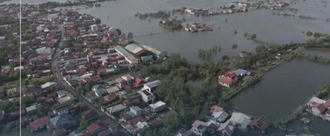
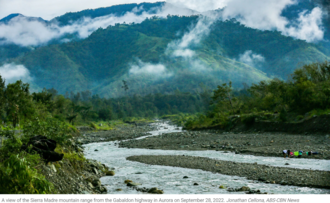
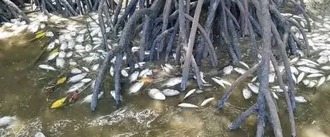
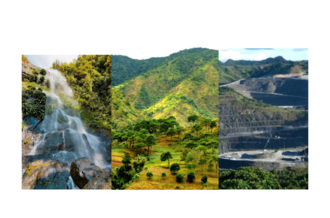

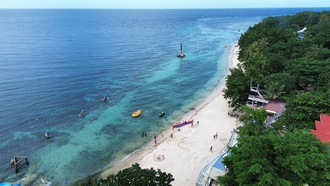


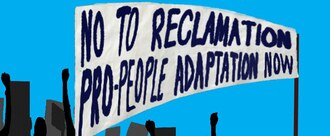
.png)
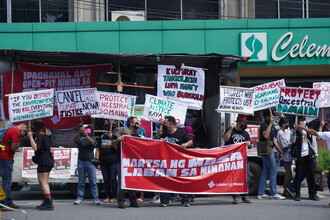
.jpg)